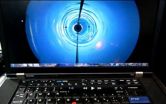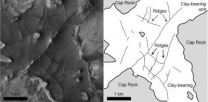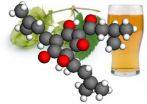(Press-News.org) In a first-of-its-kind feat of science and engineering, a National Science Foundation (NSF)-funded research team has successfully drilled through 800 meters (2,600 feet) of Antarctic ice to reach a subglacial lake and retrieve water and sediment samples that have been isolated from direct contact with the atmosphere for many thousands of years.
Scientists and drillers with the interdisciplinary Whillans Ice Stream Subglacial Access Research Drilling project (WISSARD) announced Jan. 28 local time (U.S. stations in Antarctica keep New Zealand time) that they had used a customized clean hot-water drill to directly obtain samples from the waters and sediments of subglacial Lake Whillans.
The samples may contain microscopic life that has evolved uniquely to survive in conditions of extreme cold and lack of light and nutrients. Studying the samples may help scientists understand not only how life can survive in other extreme ecosystems on Earth, but also on other icy worlds in our solar system.
The WISSARD teams' accomplishment, the researchers said, "hails a new era in polar science, opening a window for future interdisciplinary science in one of Earth's last unexplored frontiers."
A massive ice sheet, almost two miles thick in places, covers more than 95 percent of the Antarctic continent. Only in recent decades have airborne and satellite radar and other mapping technologies revealed that a vast, subglacial system of rivers and lakes exists under the ice sheet. Lakes vary in size, with the largest being Vostok Subglacial Lake in the Antarctic interior that is comparable in size to Lake Ontario.
WISSARD targeted a smaller lake (1.2 square miles in area), where several lakes appear linked to each other and may drain to the ocean, as the first project to obtain clean, intact samples of water and sediments from a subglacial lake.
The achievement is the culmination of more than a decade of international and national planning and 3 1/2 years of project preparation by the WISSARD consortium of U.S. universities and two international contributors. There are 13 WISSARD principal investigators representing eight different U.S. institutions.
NSF, which manages the United States Antarctic Program, provided over $10 million in grants as part of NSF's International Polar Year portfolio to support the WISSARD science and development of related technologies.
The National Aeronautics and Space Administration's (NASA) Cryospheric Sciences Program, the National Oceanic and Atmospheric Administration (NOAA), and the private Gordon and Betty Moore Foundation also provided support for the project.
The interdisciplinary research team includes groups of experts in the following areas of science: life in icy environments, led by John Priscu, of Montana State University; glacial geology, led by Ross Powell, of Northern Illinois University; and glacial hydrology, led by Slawek Tulaczyk, of the University of California, Santa Cruz.
Sharing of expertise by the groups of disciplinary experts will allow the data collected to be cast in a systemic, global context.
The WISSARD team will now process the water and sediment samples they have collected in hopes of answering seminal questions related to the structure and function of subglacial microbial life, climate history and contemporary ice-sheet dynamics.
Video surveys of the lake floor and measurements of selected physical and chemical properties of the waters and sediments will allow the team to further characterize the lake and its environs.
The approach to drilling was guided by recommendations in the 2007 National Research Council-sponsored report, "Exploration of Antarctic Subglacial Aquatic Environments: Environmental and Scientific Stewardship," aimed to protect these unique environments from contamination.
A team of engineers and technicians directed by Frank Rack, of the University of Nebraska-Lincoln, designed, developed and fabricated the specialized hot-water drill that was fitted with a filtration and germicidal UV system to prevent contamination of the subglacial environment and to recover clean samples for microbial analyses. In addition, the numerous customized scientific samplers and instruments used for this project were also carefully cleaned before being lowered into the borehole through the ice and into the lake.
Following their successful retrieval, the samples are now being carefully prepared for their shipment off the ice and back to laboratories for numerous chemical and biological analyses over the coming weeks and months.
INFORMATION:
-NSF-
NSF-funded team samples Antarctic lake beneath the ice sheet
Samples may contain microbes from an ecosystem isolated for thousands of years, with implications for the search for life elsewhere in extreme environments
2013-01-29
ELSE PRESS RELEASES FROM THIS DATE:
Fossilized conduits suggest water flowed beneath Martian Surface
2013-01-29
PROVIDENCE, R.I. [Brown University] — Networks of narrow ridges found in impact craters on Mars appear to be the fossilized remnants of underground cracks through which water once flowed, according to a new analysis by researchers from Brown University.
The study, in press in the journal Geophysical Research Letters, bolsters the idea that the subsurface environment on Mars once had an active hydrology and could be a good place to search for evidence of past life. The research was conducted by Lee Saper, a recent Brown graduate, with Jack Mustard, professor of geological ...
Researchers find gene that turns up effect of chemotherapy
2013-01-29
Chemotherapy is one of the most common treatments for cancer patients. However, many patients suffer from serious side-effects and a large proportion does not respond to the treatment. Researchers from the Biotech Research and Innovation Centre (BRIC) and Center for Healthy Aging, University of Copenhagen, now show that the gene FBH1 helps turn up the effect of chemotherapy.
"Our results show that the gene FBH1 is crucial in order for some chemotherapeutics to become active in the body and kill the cancer cells. If we can find a feasible method to increase the activity ...
Hydrogen sulfide: The next anti-aging agent?
2013-01-29
Hydrogen sulfide (H2S) may play a wide-ranging role in staving off aging, according to a paper published online ahead of print in the journal Molecular and Cellular Biology. In this review article, a team from China explores the compound's plethora of potential anti-aging pathways.
"H2S has been gaining increasing attention as an important endogenous signaling molecule because of its significant effects on the cardiovascular and nervous systems," the team writes. The evidence is mounting, they note, that hydrogen sulfide slows aging by inhibiting free-radical reactions, ...
New OHSU research helps explain early-onset puberty in females
2013-01-29
BEAVERTON, Ore. - New research from Oregon Health & Science University has provided significant insight into the reasons why early-onset puberty occurs in females. The research, which was conducted at OHSU's Oregon National Primate Research Center, is published in the current early online edition of the journal Nature Neuroscience.
The paper explains how OHSU scientists are investigating the role of epigenetics in the control of puberty. Epigenetics refers to changes in gene activity linked to external factors that do not involve changes to the genetic code itself. The ...
Tomorrow's life-saving medications may currently be living at the bottom of the sea
2013-01-29
PORTLAND, Ore. – OHSU researchers, in partnership with scientists from several other institutions, have published two new research papers that signal how the next class of powerful medications may currently reside at the bottom of the ocean. In both cases, the researchers were focused on ocean-based mollusks – a category of animal that includes snails, clams and squid and their bacterial companions.
Sea life studies aid researchers in several ways, including the development of new medications and biofuels. Because many of these ocean animal species have existed in ...
Beer's bitter compounds could help brew new medicines
2013-01-29
Researchers employing a century-old observational technique have determined the precise configuration of humulones, substances derived from hops that give beer its distinctive flavor.
That might not sound like a big deal to the average brewmaster, but the findings overturn results reported in scientific literature in the last 40 years and could lead to new pharmaceuticals to treat diabetes, some types of cancer and other maladies.
"Now that we have the right results, what happens to the bitter hops in the beer-brewing process makes a lot more sense," said Werner ...
Annals of Internal Medicine early release article for Jan. 29, 2013
2013-01-29
Philadelphia, January 29, 2012 – The Center for Disease Control and Prevention's Advisory Committee on Immunization Practices (ACIP) announced its recommended 2013 adult immunization schedule that includes important updates to the pneumococcal, Tdap (tetanus, diphtheria, and acellular pertussis), and influenza vaccines. Because current vaccination rates are low, ACIP also urges health care providers to regularly assess patient vaccination histories and implement intervention strategies to increase adherence. This recommendation will be published in Annals of Internal Medicine, ...
Study finds significant microorganism populations in middle and upper troposphere
2013-01-29
In what is believed to be the first study of its kind, researchers used genomic techniques to document the presence of significant numbers of living microorganisms – principally bacteria – in the middle and upper troposphere, that section of the atmosphere approximately four to six miles above the Earth's surface.
Whether the microorganisms routinely inhabit this portion of the atmosphere – perhaps living on carbon compounds also found there – or whether they were simply lofted there from the Earth's surface isn't yet known. The finding is of interest to atmospheric scientists, ...
New research uncovers the neural mechanism underlying drug cravings
2013-01-29
Addiction may result from abnormal brain circuitry in the frontal cortex, the part of the brain that controls decision-making. Researchers from the RIKEN Center for Molecular Imaging Science in Japan collaborating with colleagues from the Montreal Neurological Institute of McGill University in Canada report today that the lateral and orbital regions of the frontal cortex interact during the response to a drug-related cue and that aberrant interaction between the two frontal regions may underlie addiction. Their results are published today in the journal Proceedings of ...
Hospital patient loads often at unsafe levels, physician survey says
2013-01-29
Nationwide, more than one-quarter of hospital-based general practitioners who take over for patients' primary care doctors to manage inpatient care say their average patient load exceeds safe levels multiple times per month, according to a new Johns Hopkins study. Moreover, the study found that one in five of these physicians, known as hospitalists, reports that their workload puts patients at risk for serious complications, or even death.
The research, reported in JAMA Internal Medicine, comes as health care systems anticipate an influx of new patients generated by the ...
LAST 30 PRESS RELEASES:
The Ceramic Society of Japan’s Oxoate Ceramics Research Association launches new international book project
Heart-brain connection: international study reveals the role of the vagus nerve in keeping the heart young
Researchers identify Rb1 as a predictive biomarker for a new therapeutic strategy in some breast cancers
Survey reveals ethical gaps slowing AI adoption in pediatric surgery
Stimulant ADHD medications work differently than thought
AI overestimates how smart people are, according to HSE economists
HSE researchers create genome-wide map of quadruplexes
Scientists boost cell "powerhouses" to burn more calories
Automatic label checking: The missing step in making reliable medical AI
Low daily alcohol intake linked to 50% heightened mouth cancer risk in India
American Meteorological Society announces Rick Spinrad as 2026 President-Elect
Biomass-based carbon capture spotlighted in newly released global climate webinar recording
Illuminating invisible nano pollutants: advanced bioimaging tracks the full journey of emerging nanoscale contaminants in living systems
How does age affect recovery from spinal cord injury?
Novel AI tool offers prognosis for patients with head and neck cancer
Fathers’ microplastic exposure tied to their children’s metabolic problems
Research validates laboratory model for studying high-grade serous ovarian cancer
SIR 2026 delivers transformative breakthroughs in minimally invasive medicine to improve patient care
Stem Cell Reports most downloaded papers of 2025 highlight the breadth and impact of stem cell research
Oxford-led study estimates NHS spends around 3% of its primary and secondary care budget on the health impacts of heat and cold in England
A researcher’s long quest leads to a smart composite breakthrough
Urban wild bees act as “microbial sensors” of city health.
New study finds where you live affects recovery after a hip fracture
Forecasting the impact of fully automated vehicle adoption on US road traffic injuries
Alcohol-related hospitalizations from 2016 to 2022
Semaglutide and hospitalizations in patients with obesity and established cardiovascular disease
Researchers ‘listen in’ to embryo-mother interactions during implantation using a culture system replicating the womb lining
How changing your diet could help save the world
How to make AI truly scalable and reliable for real-time traffic assignment?
Beyond fragmented markets: A new framework for efficient and stable ride-pooling
[Press-News.org] NSF-funded team samples Antarctic lake beneath the ice sheetSamples may contain microbes from an ecosystem isolated for thousands of years, with implications for the search for life elsewhere in extreme environments



